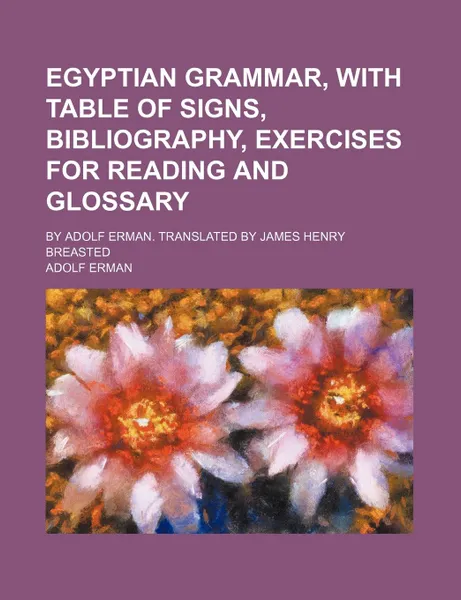Egyptian Grammar, with Table of Signs, Bibliography, Exercises for Reading and Glossary; By Adolf Erman. Translated by James Henry Breasted 12+
🔖 This historic book may have numerous typos and missing text. Purchasers can download a free scanned copy of the original book (without typos) from the publisher. Not indexed. Not illustrated. 1894 Excerpt: ... 2 Westc. 8, 8. 222. It is used especially at the beginning of a narrative or of one of its paragraphs: (1 K "D IN v Iw hibn ml ribi "My lord sent me out &c."1 (Beginning of the narrative). p. WITH THE AUXILIARY VERB wn. 223. The corresponding use of the auxiliary verb-s» wn "it is", is far more rare and probably archaic. There are found-a $ v wn sdmf "he hears",-") K wn sdmnf"he heard" and a-» (j Mwn srfm/ "he heard". 6. WITH DOUBLE SUBJECT, a. THE FORM iwf sdmf. 224. This form fl" IfsT" iwf sdmf lit-"he is' he hears"), means "he is accustomed to hear". With nominal subject it runs as follows: (1 p. Ms iii) Iw ntr sdmf "The god is accustomed to hear". When a number of verbs in this form follow one another, in/ is used with the first of them only. 225-It is used (similarly, the forms of § 221) in re i Eb. 51, 18. 2 Totb. 15 B, 6. 3 Sin. 96. Eb. 51, 20. 5AAAAAA I I-A n A AWWVA IT v J-7-1 vft «wn hnf h3bf ni "His majesty sent to me",1 is explained by § 346.-(. THE FORM hrf sdmf. 229. This rare formation is evidently related to sdmhrf, and like it, is used in directions: Yfl 'rt hrk wihk dtk "lay your hand",2 D I O n I I ll ¥k. %r st &ss ddls im "Let the woman...
Мнения
